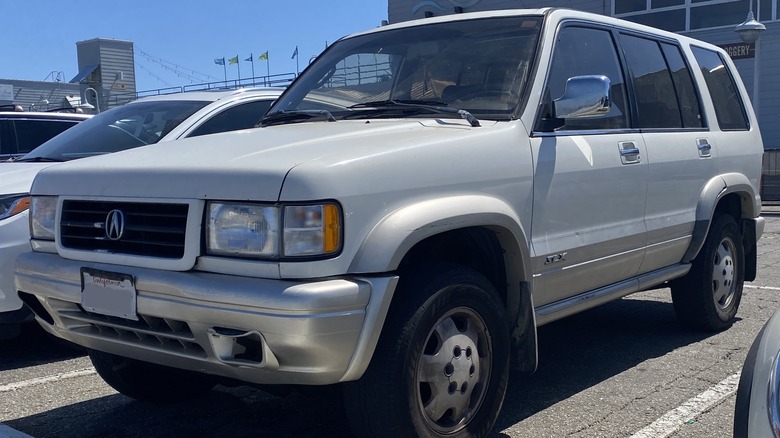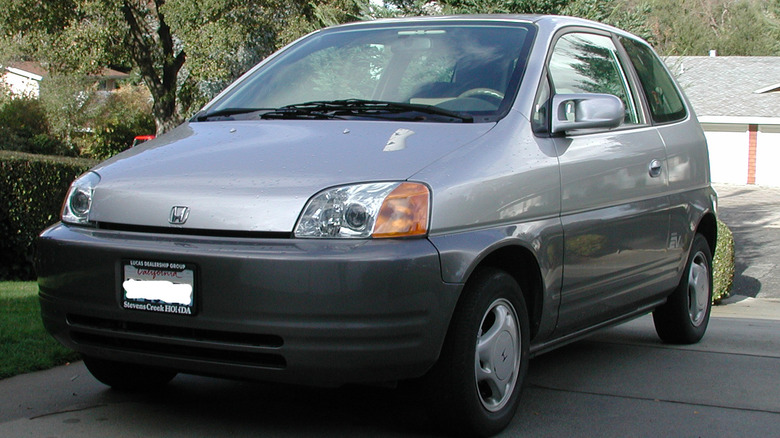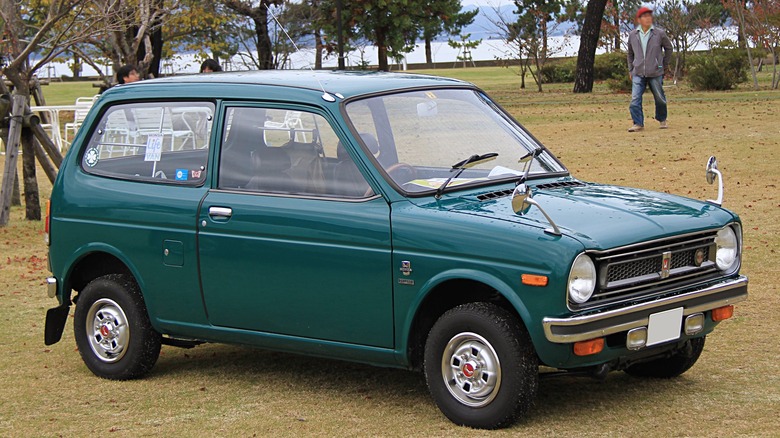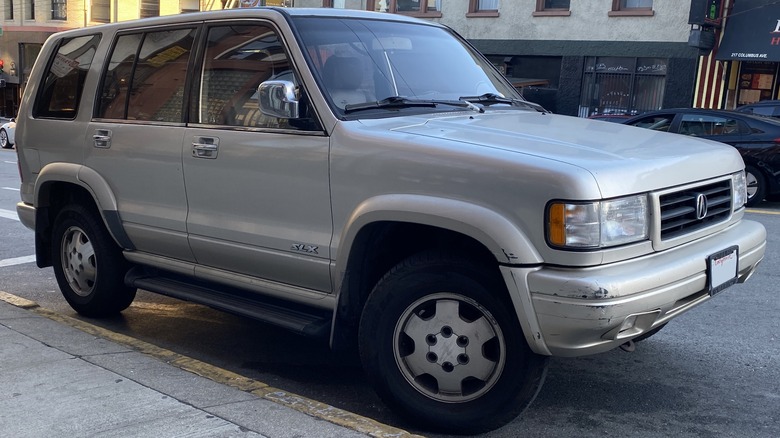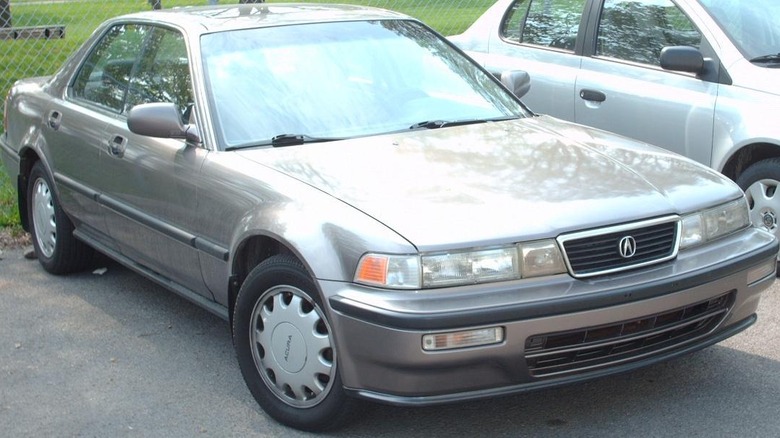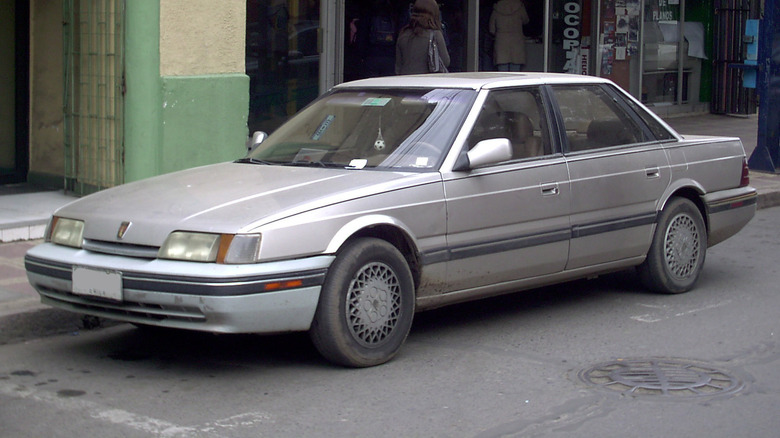Honda's 5 Biggest Car Flops Of All Time
Honda has been in the automobile business for many, many decades at this point, and it has produced so many vehicles over that time that people love. To this day, the company remains a company that is able to regularly produce highly reliable vehicles, under the standard Honda brand and the luxury Acura arm, and the Japanese automaker shows no signs of slowing down anytime soon. After all, three of its vehicles — the CR-V, the Civic, and the Accord — ranked among the top 20 best-selling vehicles in the United States in 2023. Even beyond those, you still have the likes of the Honda Odyssey minivan and Pilot SUV making an impact.
While Honda has enjoyed a lot of success over its lifespan, not every single vehicle the company produces has been a runaway smash hit. To expect that of any car company is rather presumptuous, but considering Honda's reputation of reliability, it may come as something of a surprise that some of their vehicles haven't remained in the popular consciousness. We are going to look back at the history of Honda — and that includes other companies that Honda has owned — to find five vehicles that make you scratch your head. These are vehicles that received poor reviews, barely made any kind of dent in the marketplace, had very few units ever built for it, or simply existed as an odd curio that you may not have even known was created in the first place.
[Featured image by Cutlass via Wikimedia Commons | Cropped and scaled | CC0 1.0]
Honda EV Plus
The first vehicle on this list was one that was in production from 1997 to 1999, but in that time, only around 330 units of it ever made it to a customer. This would be the Honda EV Plus. The reason as to why so few units of this were produced does not have much to do with the car's actual performance, but the EV Plus arrived at a time when the world as a whole was not really ready for it.
As you can guess by the name, the EV Plus was an electric vehicle from Honda. Not only that, but it was one of the very first all-electric vehicles produced by a major company that utilized a NiMH battery under the hood rather than one that used lead acid batteries. Nowadays, electric vehicles typically use lithium-ion batteries, but NiMH was still a major step forward for automobiles, particularly all the way back in 1997 when the idea of an all-electric vehicle still felt like science fiction. You are more likely to find NiMH batteries in some hybrid cars today to work alongside a traditional engine.
Because this was such a new type of vehicle, it was not a cheap product, costing over $53,000 back in 1997. Adjusted for inflation, that is over $100,000 today. For a small, convenience vehicle, that is an exorbitant price. Even the $54,000 today would be a lot for this kind of car. Honda decided to take the EV Plus' NiMH battery and move along to the hybrid space, creating the Honda Insight as a successor.
[Featured image by Evplus via Wikimedia Commons | Cropped and scaled | Public Domain]
First Generation Honda Life
For those who are familiar with Japanese kei cars, you may be a bit surprised to see the Honda Life on this list. This was a vehicle that started production in 1997 and had a very healthy life that made it through 2014. This run also featured the hilariously named variation, the Honda Life Dunk. However, this is not the version of the Honda Life that could be classified as a flop. This era of the kei car was actually a revival, as Honda had first introduced the Life all the way back in 1971. That run was not nearly as fruitful as the more modern iteration.
The original Honda Life had a run from 1971 to 1974, and to call it a flop would be a bit of an overstatement when it launched. However, things changed in 1972 when Honda produced the very first Honda Civic. Despite that car being both larger and more expensive than the Honda Life, the Civic quickly overtook it in sales. Another issue was that kei cars have never been vehicles that have a wide international reach and are rarely exported. This is particularly true in the United States, where kei cars are basically nonexistent. Because Honda had a hit with the Civic, the company decided in 1974 that there really wasn't a need for the Honda Life in its lineup. Not only that, but it would be roughly a decade before Honda produced another passenger kei car, the Honda Today.
[Featured image by TTTNIS via Wikimedia Commons | Cropped and scaled | CC0 1.0]
Acura SLX
The previous two vehicles on this list were ultimately victims of circumstance. The former was a bit too ahead of its time, and the latter had internal competition it couldn't overcome. This particular vehicle is the first one to make this list because it was at the center of a pretty major controversy, which makes it even more surprising that it is a vehicle that comes from Honda's luxury brand, Acura.
In 1995, Acura released a new vehicle called SLX for the 1996 model year. However, this vehicle wasn't exactly new. It was a rebranded and upgraded version of the Isuzu Trooper, which had been in production going all the way back to 1981. Various other companies, including Chevrolet and Subaru, had rebadged the Trooper in years past, but the Acura SLX was meant to be a step up in luxury, considering the new branding. The problem came with a review from Consumer Reports that alleged that the SLX had a high likelihood of rolling over, giving the vehicle a "Not Acceptable" rating.
When the National Highway Traffic Administration conducted tests to see if what Consumer Reports had said was correct, it found no evidence of any kind of defect. Isuzu then sued Consumer Reports for defamation and claimed it had lost out on over $200 million of revenue, and this actually went to trial. Ultimately, Isuzu lost the case, but whatever outcome was reached, sales for the Acura SLX were on a sharp decline. It's tough to get people to buy your car when they think it will roll over, even if it actually won't.
[Featured image by Cutlass via Wikimedia Commons | Cropped and scaled | CC0 1.0]
Acura Vigor
The Acura SLX is not the only time that the luxury arm of Honda makes an appearance on this list. This one does not have any crazy controversy surrounding it, and it was not even a poorly received vehicle. It just simply did not move enough units to justify a long run of production. That vehicle is the mid-size luxury sedan, the Acura Vigor. Introduced for the 1992 model year, this particular car only lasted a few years before being replaced by the Acura TL in 1996, which sold incredibly well in its prime. If its successor was so popular, why didn't the Vigor take off the same way?
Well, Honda and Acura made a couple of unusual decisions when building the sedan. The strangest is that, as opposed to most of the cars on the road from both Acura and other automakers, the Vigor had its engine operate longitudinally in order to fit the inline-five engine properly under the hood, causing the car to have front-wheel drive. Luxury, performance, and smoothness go hand-in-hand with rear-wheel drive most of the time, so this setup made for a driving experience that was rather foreign to most people in the luxury market.
What also didn't help was that Acura already had the Legend as an option. This was another mid-size luxury sedan, but it was a bit nicer than the Vigor and featured a V6 under the hood for smoother rear-wheel drive. For just a couple of thousand dollars more, this was the far superior option. Ultimately, the Vigor was in no man's land.
[Featured image by Bull-Doser via Wikimedia Commons | Cropped and scaled | Public Domain]
Sterling 825
When MotorTrend labels the next entry as "one of the worst cars in history," it stands to reason that it should be appearing on a list like this. This particular vehicle does not brandish the name Honda or Acura, though. Instead, this vehicle comes from the short-lived partnership between Honda and British automaker Austin-Rover Group. The two companies had collaborated on a couple of vehicles in the early-to-mid-1980s. For example, 1986 saw their partnership deliver the aforementioned Acura Legend. One year later, it gave us the Sterling 825, which was about as far away from the reception as the Legend as you can get.
In other places around the world, it was known as a Rover 800, but for the United States, Honda, and ARG created the brand new Sterling name, which would end up not making it past 1991. The reason for the Sterling 825's failure has to do with several different factors. Notably, it was not a well-made vehicle, particularly when it came to its electrical system. This came from the British side of the manufacturing, and British-made vehicles have never had a great electrical reputation. MotorTrend even has an exact mileage counter for the dozens of issues the Sterling 825 faced.
Plus, Sterling was a new brand, and any indication of its relationship to Honda or ARG was not entirely known. Over its five years, it sold anywhere from around 4,000 – 14,000 cars per year, which isn't exactly terrible but clearly a step behind what these companies would hope for. You mix together a cavalcade of car failures and mediocre sales, and you have the Sterling 825.
[Featured image by order_242 via Wikimedia Commons | Cropped and scaled | CC BY-SA 2.0]
